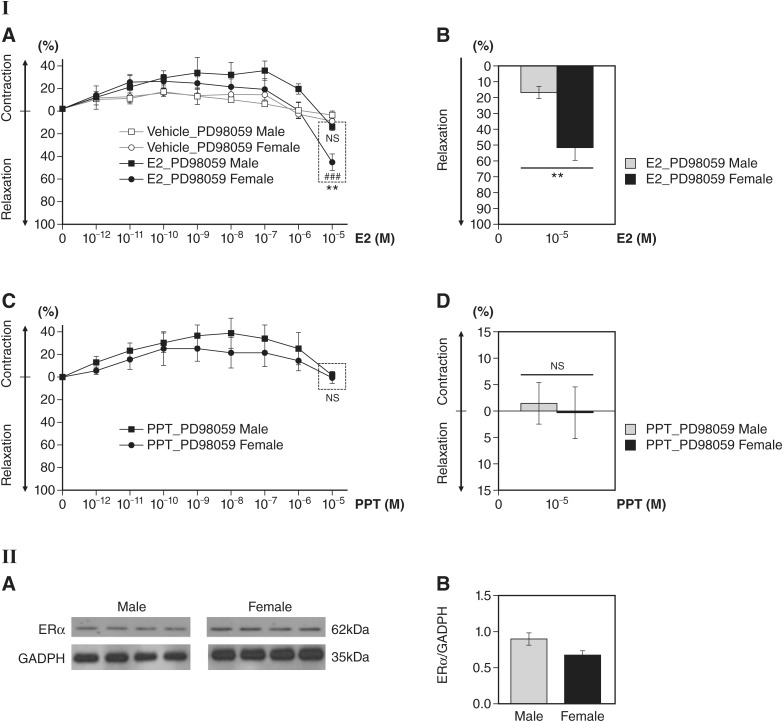Fig. 2.
Effect of the ERK1/2 inhibitor PD-98059 on 17β-estradiol (E2)-induced or 4,4′,4″-(4-propyl-[1H]pyrazole-1,3,5-triyl)tris-phenol (PPT)-induced vessel relaxation in male and female mouse aortas. I,A: preadministration with PD-98059 (10 μM) for 30 min in E2 (10−12−10−5 M)-treated aortic rings reduced vessel relaxation in both male and female aortic rings at 10−5 M E2, but female aortic rings showed significantly greater relaxation than male aortic rings (n = 3 per sex in each treatment group, ###P < 0.001, E2 treatment vs. vehicle controls in female aortic rings; **P < 0.01, E2-treated female vs. male aortic rings). No significant difference in vessel relaxation was observed between E2- and vehicle-treated male aortic rings pretreated with PD-98059 (n = 3 per sex). I,B: bar graph of I,A at 10−5 M E2. n = 3 per sex, **P < 0.01, E2-treated female vs. male mice. Percent differences in relaxation are shown between male and female aortas preincubated with PD-98059 at 10−5 M E2. I,C: pretreatment with PD-98059 (10 µM) in PPT-treated aortic rings showed no significant vessel relaxation at 10−5 M PPT in both male and female mice (n = 5 per sex). I,D: bar graph of I,C at 10−5 M PPT. No significant difference in vessel tension was found between female and male mice following PPT treatment in PD-98059-pretreated groups (n = 5 per sex). II,A: estrogen receptor-α (ERα) expression levels in male and female mouse aortas; representative Western blots are shown for ERα levels normalized to the GAPDH loading control. There was no significant difference in aortic ERα levels of male compared with female mice (n = 4 per sex). II,B: ERα expression levels in male and female mouse aortas (quantitation of II,A). No significant difference was found in ERα levels of protein between male and female aortas (n = 4 per sex). Data are presented as means ± SE.

